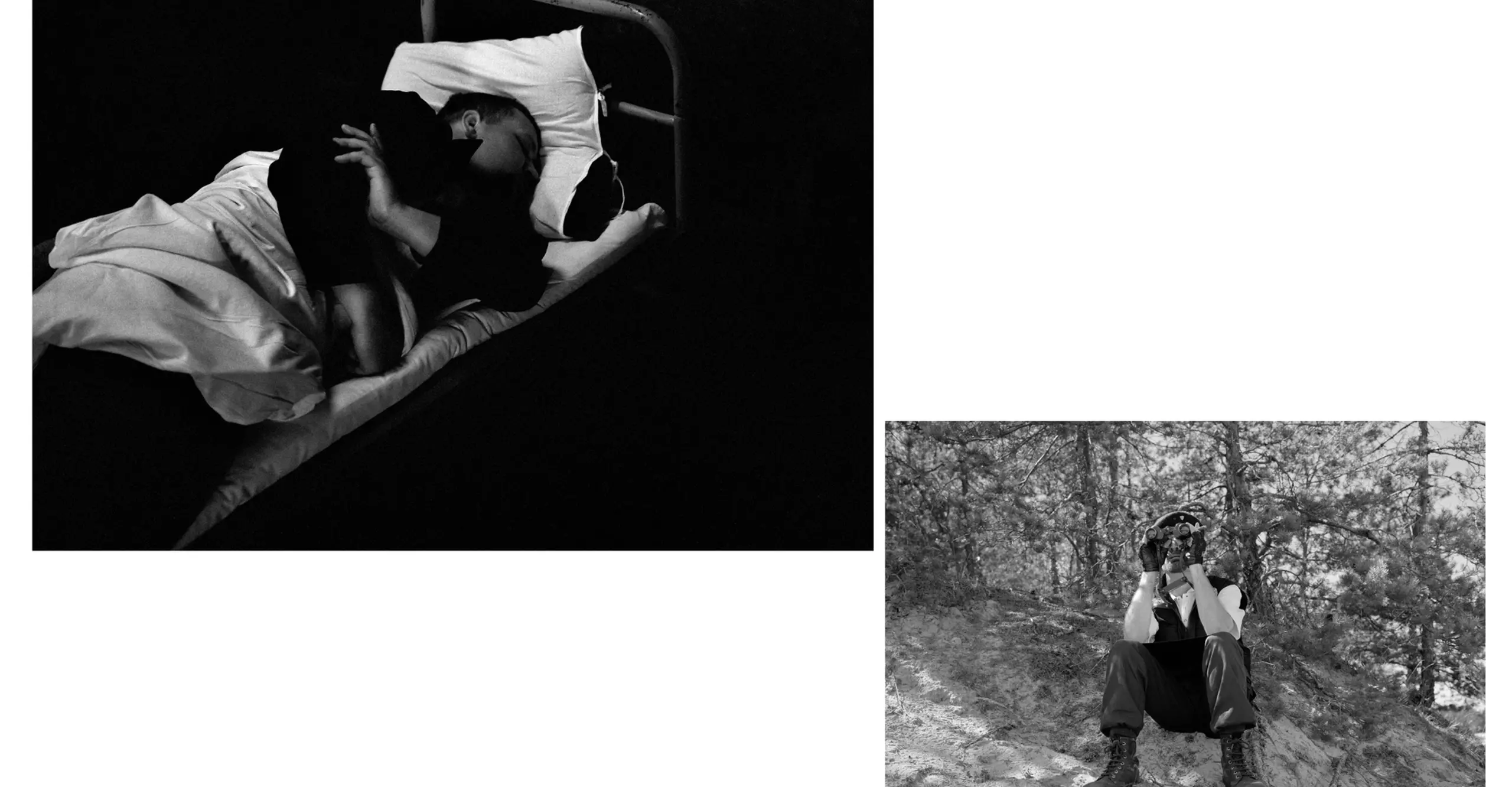Esther Teichmann looks at the relationships between loss, desire and the imaginary. Blurring autobiography and fiction, narratives emerge from fragments.
A giant camera stands on the edge of a cliff overlooking the sea. She walks into its dark belly, eyes adjusting to the change in light. The lens in the center of its conical roof focuses the image outdoors onto a mirror, projecting it upon the concave circular dish in the room’s middle. The eggshell lacquered projection bowl now holds the most exquisite image – tiny crystalline waves break silently over jagged cliffs, water droplets spray in minute detail.
Its circumference would fit a curled-up body almost exactly. She could sleep here, waves crashing upon skin, dancing across eyelids, covering her with their continual circular motion. She will come back here one day and he will stand behind her. Together they will inhale the image in silence, breath suspended, waiting for that moment when the late afternoon sun hits mute waves, flooding everything inside her in an overexposed glow of too much light.
He comes to her room, above the cliffs and the sea, surrounded by a thick jungle garden. She tastes her saltiness in his mouth, the taste of the ocean, the sweet smell of swamps. Deep-sea diving, eyes open, swimming from luminous turquoise into dark blue, towards almost black waters. Unafraid, she swims down, through caves, under waterfalls, no longer needing to breathe, past and with all the women who are a part of her. The soft downy hair of his armpit feels like the cradle next to her mother’s breast in which her head still fits exactly.
She wraps herself around him the way she and her sisters used to sleep entwined – no longer homesick. He sleeps arms outstretched as though crucified, wrists upturned, chest exposed. She watches him, tracing his veins with her eyes, until they disappear beneath flesh, thinking of the bodies that have been as familiar as his is becoming, the strangeness of intimacy.
Her gaze falls upon the fractal scar beginning at the base of his throat, in that soft indentation between two arteries. From this tender point, it spreads out and down like the finest of seaweed, fossilized upon him in one violent moment. Touching his lightning scar, reading the strange map etched into him. It glistens a coral pink, like the inside of the seashell she holds to her ear, listening to the ocean to fall asleep. She keeps a thicker kind of seaweed in the bath, the brackish salty smell reaching her boat-bed when a breeze moves across the room. She keeps these washed up branches of slippery leather, so as to bathe within their drowned mermaids’ embrace, lowering herself into their tentacles as he sleeps oblivious, a few feet away. 1
In David Knowles' novella, The Secrets of the Camera Obscura, 2 the giant camera nestled on top of Point Lobos in San Francisco 3, is at the centre of a tale of love and obsession. Returning always to the special powers of the camera obscura and its ability to both focus more clearly whilst simultaneously transforming the world beyond it, we are taken on a journey through history which links vision to desire and murder.
The fog rolls in from the ocean and the camera screen goes gray….
The only clues are the black letters, GIANT CAMERA, painted on the east wall. In those words lies the key to understanding the machine, for when you pass into the small dark chamber you have entered the insides of a camera, a camera in which you are the film, or more precisely, your memory is. 4
— Esther Teichmann
Esther Teichmann is an artist and writer. She received a PhD in Fine Art from the Royal College of Art in 2011, and is Senior Lecturer at the University of the Arts London, spending 2012 – 2013 as Guest Professor at the California College of the Arts in San Francisco. From April 2018 Esther will be Head of Programme for the MRes at the RCA.
Working with the photographic across still and moving image installations, Teichmann looks at the relationships between loss, desire and the imaginary. Blurring autobiography and fiction, narratives emerge from fragments. She shows and publishes her work internationally, recently collaborating with composer Deirdre Gribbin, writer Carol Mavor and Studio Hato for the solo museum show Heavy the Sea, Transformer Station, Cleveland, 2017. Esther co-edited and co-curated the book and exhibition Staging Disorder with artist Christopher Stewart in 2015 (UAL), and is currently working on a monograph of visual works and essays, Fulmine, forthcoming from Stanley/ Barker.
- 1. Extract from Fractal Scars, Salt Water and Tears, Esther Teichmann, 2012
- 2. David Knowles, The Secrets of the Camera Obscura, San Francisco, Chronicle Books, 1994, extracts from pp.11-13.
- 3. www.giantcamera.com, 1096 Point Lobos, San Francisco, CA 94121.
- 4. Detailed Close-Ups of Far-Off Scenes, Life Magazine, March 1st 1954. “The camera obscura is a centuries old invention, often attributed to Leonardo da Vinci. Some years ago an encyclopedic description of the device caught the eye of Floyd Jennings, a San Francisco businessman, who built one as a tourist attraction on a cliff overlooking Seal Rocks. Basically, his camera obscura is a 20x20-foot darkened room with a 150-inch focal length lens through which light from the outdoor scene enters to form a lifelike image on a white-topped table. The effect is startling… And since there is no extraneous light, the colours are revealed more vividly and faithfully then they normally appear outside.”
